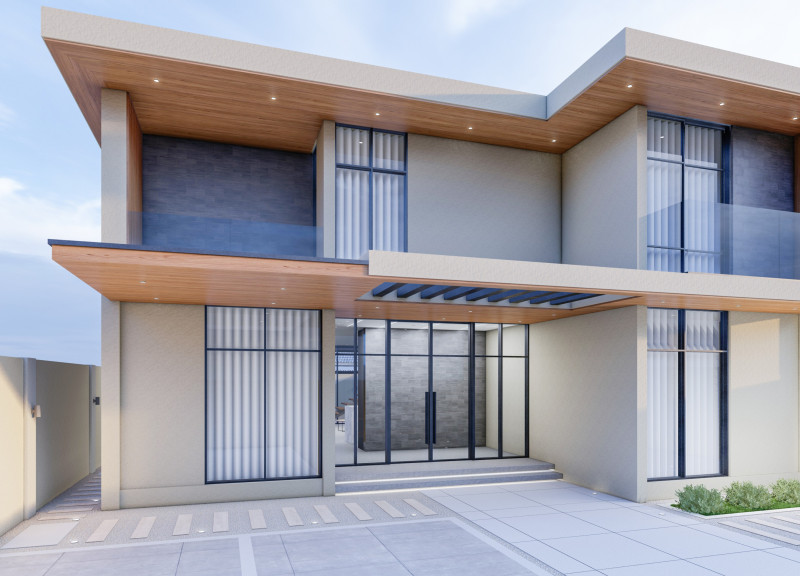5 key facts about this project
At the heart of this project is a clear representation of its functional aspect. The design accommodates a diverse range of activities, thereby fostering communal interaction and facilitating various uses. This flexibility in function is crucial as it allows the space to adapt over time, reinforcing its relevance to the community. Each area within the project has been meticulously designed to serve specific purposes while maintaining an overall coherence that ties the entire composition together.
One of the standout features of this design is the innovative approach to materiality. The choice of materials reflects not only the immediate surroundings but also the purpose of the structure. A thoughtful selection of locally-sourced materials promotes sustainability, bridging the gap between the built environment and natural elements. Integration of wood, stone, and glass invites natural light and ensures a seamless connection with the outdoors, enhancing the overall experience of the interior spaces. Furthermore, the innovative use of these materials showcases the design's commitment to durability and sustainability, qualities that are increasingly important in contemporary architecture.
The project also places significant emphasis on environmental considerations. Strategically placed windows and openings are designed to optimize natural ventilation and daylighting, reducing the reliance on artificial lighting and mechanical systems. This approach not only lowers energy consumption but also creates a healthier indoor environment for occupants. The design thoughtfully incorporates green spaces, which serve both aesthetic and ecological functions. These areas provide places for relaxation and recreation while supporting local biodiversity, further underscoring the project’s commitment to sustainable architectural practices.
Unique design elements contribute to the overall character of the project. The play of volumes and forms creates an engaging façade that draws the eye while offering a sense of exploration and intrigue. Outdoor spaces are carefully integrated with interior areas, creating a fluid transition between the two. This connection encourages users to flow seamlessly from indoors to outdoors, enriching their experience and interaction with the environment.
Landscaping plays a vital role in enhancing the architectural narrative. The selection of native plants not only attains a visually appealing landscape but also supports the local ecosystem and requires minimal maintenance. Hardscape elements like pathways and gathering spaces have been designed to invite interaction, fostering community engagement and a sense of belonging among users.
Additionally, the spatial organization within the design facilitates ease of circulation and accessibility. Open spaces are balanced with private areas, providing users with the versatility to engage with their environment according to their needs. This thoughtful layout demonstrates an understanding of how individuals interact with architecture and helps foster a sense of community.
The lighting design in the project is another critical aspect that has been considered with care. It enhances the user experience by highlighting key architectural features and creating an inviting atmosphere during nighttime hours. The use of both natural light and artfully designed artificial lighting plays a pivotal role in defining the mood and functionality of different spaces throughout the day.
In summary, this architectural project exemplifies a well-rounded understanding of design principles, functionality, and environmental stewardship. The attention to detail in materiality, spatial organization, and user interaction underscores the innovative approaches employed throughout the design process. Potential readers interested in architectural plans, sections, designs, and ideas are encouraged to explore the project presentation for a more in-depth understanding of its various elements and to appreciate fully the thoughtful considerations that have shaped this sophisticated architectural endeavor.


 Mona Abdulla Mohamed Sulaiman Al Ali,
Mona Abdulla Mohamed Sulaiman Al Ali, 























